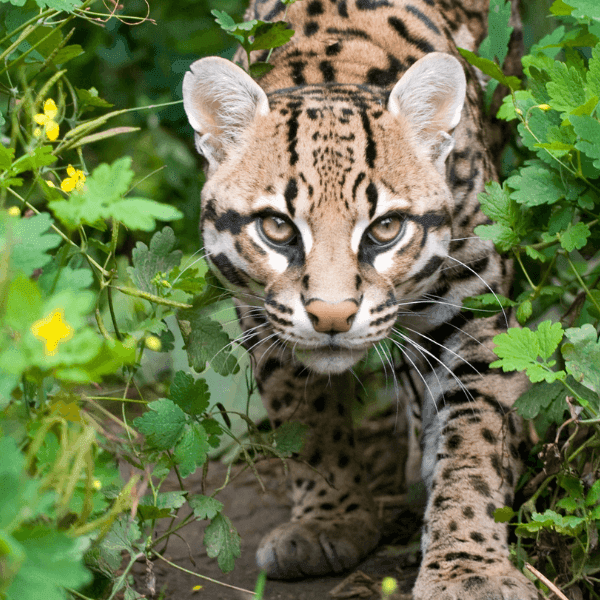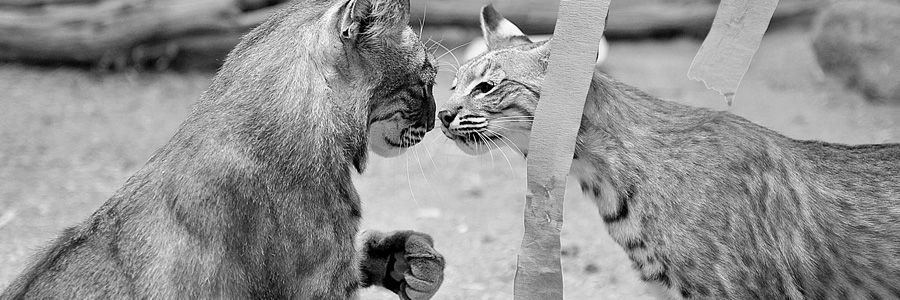OCELOT

Leopardus pardalis
- Habitat: Tropical and subtropical regions from Mexico to Argentina, preferring swamps, jungles and thickets where it hunts birds and other small creatures
- Status: Least Concern
- Population Trend: Decreasing
- Diet: Small rodents, birds, snakes, iguanas and other lizards, baby peccaries, young deer, rabbits, and even fish and crabs
- Weight: 18 - 34 lbs; Males are larger than females
- Size: 29" - 39" long; 16" - 20" tall
- Lifespan: Up to 12 years in the wild; up to 20 years in human care
- Interesting Facts:
- The ocelot is said to be a picky eater—even more so than other cats. Most cats remove feathers and fur from their prey as they eat it, but ocelots pluck off all the feathers and fur before they start to eat it.
- Each ocelot has a different coat pattern.The right and left side patterns and color of an ocelot’s coat are not the same.
- The Arizona ocelots are believed to be males dispersing north from the Mexican state of Sonora, where a breeding population of an estimated 1,000 cats persists in the northeastern backcountry



